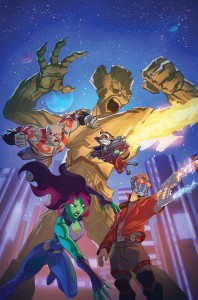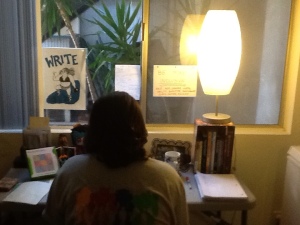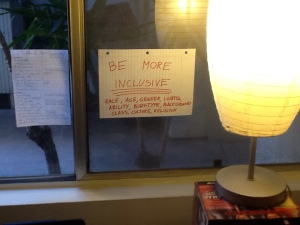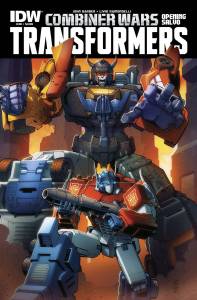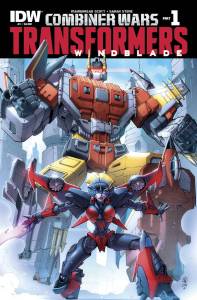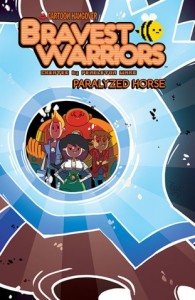One thing a lot of people don’t understand about professional writing is that most of your work happens after you’ve written your first draft. Writers do most of our work in rewrites and I’ve gotten some questions about the best way to rewrite your comic book, TV script or fanfiction novel.
Personally, I find the easiest way to re-write anything is to do multiple little passes: read through the story with a single, specific goal in mind. Don’t worry about anything but that goal. Then when you finish, do another pass with the next goal.
So I’m introducing a weekly series on my site to talk about some of my most common rewriting passes. This isn’t the only way to write, but it’s the way I write, so maybe it’ll help you too.
This week’s pass is the scene goal pass. Hope you enjoy.
NOTE: I’m using Superman characters as examples because I’m not working for DC right now and everyone knows who Superman is. I don’t own Superman; this is just an example for educational purposes; my thoughts are my own; blah, blah, blah. Please don’t sue me.
Scene Goal Pass
Read the scene and write at the top of it what actually needs to happen in this scene – what is the actual goal of this scene that moves the plot forward? Let’s try a very small, very simple (likely too simple) example.
Example 1. Superman hears Lois scream and rushes to her aid.
[NOTE: In ‘real life’ this would likely be a bigger scene where things get in the way of Superman rushing to Lois’ aid. But for the sake of keeping this example brief, we’ll just say it was an uneventful trip.]
Now that you know what needs to happen in this scene, go through the scene and cut out/adjust anything that isn’t serving that goal. In Example 1 Superman needs to hear Lois scream, not brush his teeth, talk about the sunset being pretty, fight a dozen bad guys, then hear Lois. We should only need a very small idea of where Superman is before he hears Lois and then everything afterward needs to be about rushing to her aid.
We can also trim the fat in other areas. All we NEED to have happen is to show Superman someplace, show him hear Lois and start to move toward her, then cut to him arriving wherever Lois is. We don’t need to see what happened on that trip and shouldn’t unless it adds something of real value to the scene.
GOOD IDEA: Superman flies toward Lois and calls Supergirl to meet him at Lois’ location.
This is a good addition to the scene because Superman is still pursuing the scene’s goal (coming to Lois’ aid) and establishing something that we need to set up later (that Supergirl will also be coming to this fight).
BAD IDEA: Superman hears Lois scream, turns to Supergirl, and says, “Lois is in trouble. Some women never learn,” and flies off.
This is a bad choice, because although Superman is reacting to the scene, he isn’t moving the plot forward (he stopped to talk Supergirl). In my view, if you ever write: “Character 1 stops to…” you’ve messed up. The only exception is if they’ve stopped pursuing a different goal to advance the scene’s goal (ex. Superman stopped punching a guy to save Lois).
This is also a poor choice of joke because it undercuts the goal of the scene: which is Superman rushing to Lois’ aid. If he thought Lois was in danger he’s a bad person for making a joke at her expense before saving her. It’s very hard to cut a funny joke, but they are the first things to get cut when a scene isn’t moving. If you HAD to keep this joke, a better place for it would be AFTER Superman has arrived to save Lois because it does not interfere with the goal of the scene.
So there you have it. Your first example of my rewriting process. Next time we’ll talk about my favorite pass: character motivation.
 Hey everyone! CON SEASON BEGINS!
Hey everyone! CON SEASON BEGINS!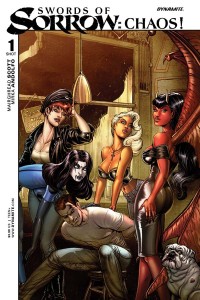 So do you ever have that dream where one of your professional heroes emails you and asks you to write a book for them? Well, a few months ago that dream came true for me when Gail Simone asked me to write the Chaos special for her upcoming Swords of Sorrow series. Of course, my head exploded, but once I gathered all the pieces I wrote a really cool and nonchalant response email as I secretly said “Yes, Yes, YES!!!”
So do you ever have that dream where one of your professional heroes emails you and asks you to write a book for them? Well, a few months ago that dream came true for me when Gail Simone asked me to write the Chaos special for her upcoming Swords of Sorrow series. Of course, my head exploded, but once I gathered all the pieces I wrote a really cool and nonchalant response email as I secretly said “Yes, Yes, YES!!!”

